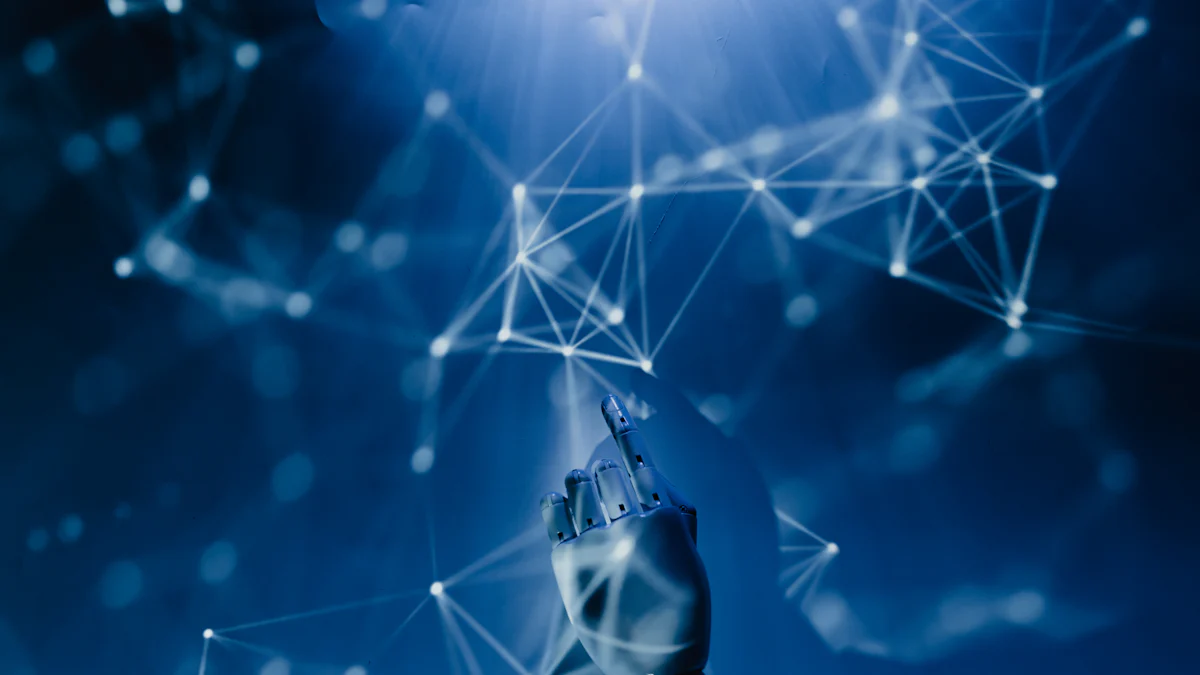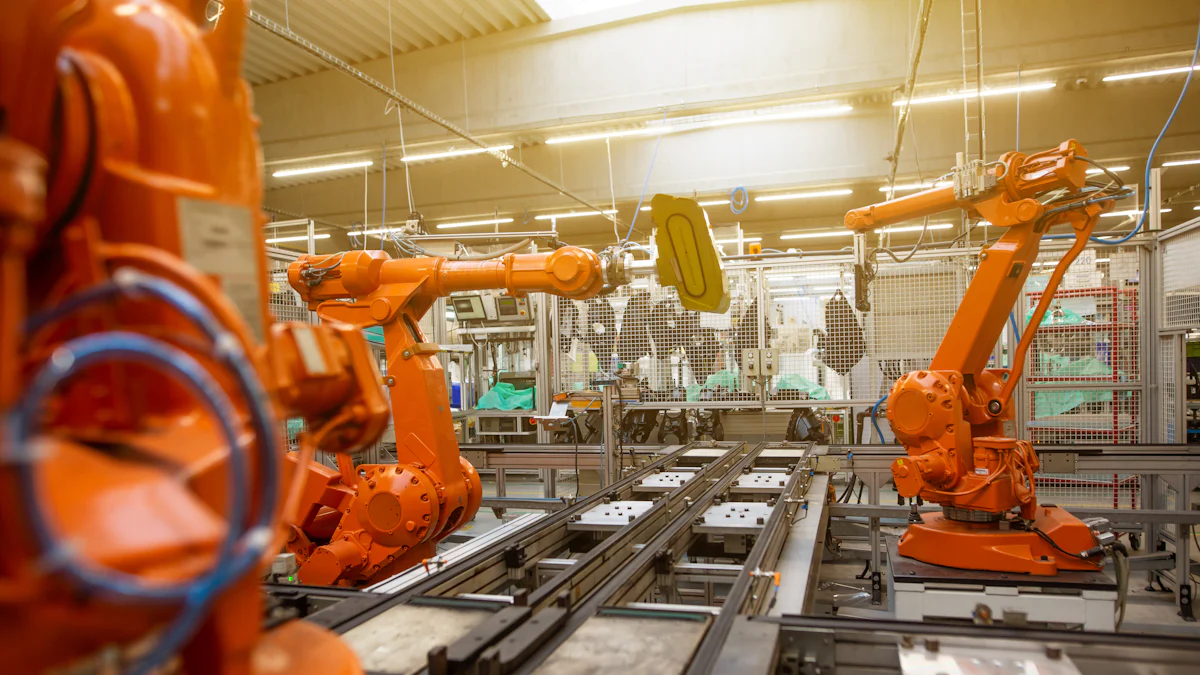The Impact of Generative AI on Traditional Machine Learning

Generative AI and traditional machine learning represent two distinct approaches in the field of artificial intelligence. Generative AI creates new data samples autonomously, mimicking human-like creativity. In contrast, traditional machine learning relies on predefined algorithms to analyze existing data for predictions or classifications. This fundamental difference highlights the adaptability and innovation of generative AI, which can generate content across various media forms. As generative AI becomes more mainstream, its potential to add up to $4.4 trillion annually to the global economy underscores its transformative impact.
Understanding Generative AI
Definition and Key Characteristics
Generative AI represents a groundbreaking advancement in artificial intelligence. It autonomously creates new data samples, mimicking human creativity. Unlike traditional machine learning, which relies on predefined algorithms, Generative AI uses advanced neural networks and deep learning techniques. These technologies enable it to analyze vast datasets and generate original content. This capability has attracted significant investment due to its potential to revolutionize content creation across various fields.
Autonomous data creation
Generative AI excels in autonomous data creation. It leverages large language models and sophisticated algorithms to produce new content that resembles human creations. By analyzing patterns within datasets, it generates outputs that are both innovative and convincing. This ability to create data independently marks a significant departure from traditional machine learning, which primarily focuses on interpreting existing data.
Use of deep learning techniques
Deep learning techniques form the backbone of Generative AI. These techniques involve training neural networks on extensive datasets, allowing the AI to learn complex patterns and relationships. As a result, Generative AI can generate content that is not only realistic but also highly adaptable. This adaptability makes it a powerful tool for tasks that require creativity and innovation.
Examples of Generative AI Applications
Generative AI finds applications in numerous domains, showcasing its versatility and creative potential. Its ability to generate content across different media forms highlights its transformative impact.
Image and video generation
In the realm of image and video generation, Generative AI has made remarkable strides. It can create realistic images and videos by sampling from the statistical distribution of the data it has been trained on. This capability has significant implications for industries such as media and entertainment, where the demand for high-quality visual content continues to grow.
Text and music creation
Generative AI also excels in text and music creation. It uses machine learning techniques to compose music and generate written content that mimics human creativity. This ability to produce original compositions and narratives opens up new possibilities for artists, writers, and musicians. By leveraging existing content, Generative AI can create new works that resonate with audiences, enhancing the creative process.
Traditional Machine Learning Overview
Definition and Core Principles
Traditional machine learning has been a cornerstone of artificial intelligence since the 1940s. It relies on predefined algorithms to analyze data and make predictions. These algorithms follow specific rules to process information, which allows them to perform tasks like facial recognition and automated driving. traditional machine learning
Predefined algorithms
Predefined algorithms form the backbone of traditional machine learning. They consist of a set of instructions that guide the system in analyzing data. These algorithms require precise input to function effectively. For example, in facial recognition, the algorithm compares facial features against a database to identify individuals.
Rule-based processing
Rule-based processing is another key aspect of traditional machine learning. It involves applying specific rules to data to achieve desired outcomes. This method works well for tasks with clear parameters, such as robotics, where machines follow programmed instructions to perform actions.
Limitations of Traditional Machine Learning
Despite its successes, traditional machine learning faces several limitations. These challenges hinder its ability to adapt and innovate in rapidly changing environments.
Dependence on labeled data
Traditional machine learning depends heavily on labeled data. It requires large datasets with accurate labels to train algorithms effectively. This reliance can be a significant drawback, as obtaining labeled data is often time-consuming and costly. Without sufficient labeled data, the system struggles to make accurate predictions.
Inflexibility in adapting to new data
Inflexibility is another limitation of traditional machine learning. Once trained, these systems find it challenging to adapt to new or unseen data. They require retraining with updated datasets to maintain accuracy. This process can be cumbersome and limits the system's ability to respond to dynamic changes in data patterns.
Impact of Generative AI on Traditional Machine Learning
Overcoming Limitations
Generative AI has revolutionized the landscape of machine learning by addressing some of its inherent limitations.
Enhanced data generation capabilities
Generative AI excels in creating synthetic data, which significantly enhances data generation capabilities. Traditional machine learning often struggles with the need for vast amounts of labeled data. Generative AI, however, can autonomously generate new data samples that mimic real-world data. This ability allows machine learning models to train on more diverse datasets, improving their accuracy and robustness. By generating synthetic data, Generative AI reduces the dependency on costly and time-consuming data labeling processes.
Improved adaptability and flexibility
Generative AI introduces a level of adaptability and flexibility that traditional machine learning lacks. It can learn patterns and relationships within datasets, enabling it to create content that adheres to these patterns. This adaptability allows Generative AI to respond to new data inputs without requiring extensive retraining. As a result, machine learning models become more dynamic and capable of handling rapidly changing environments. Generative AI's flexibility enhances the overall performance of machine learning systems, making them more resilient to unforeseen challenges.
Integration of Advanced Techniques
The integration of advanced techniques in Generative AI has further propelled its impact on traditional machine learning.
Deep learning advancements
Generative AI leverages deep learning advancements to push the boundaries of what machine learning can achieve. Deep learning techniques enable Generative AI to analyze complex datasets and generate content that resembles human intelligence. These advancements have led to significant improvements in the capability and usability of machine learning models. By incorporating deep learning, Generative AI enhances the creative element in machine learning, allowing for the production of novel content across various domains.
Enhanced model training processes
Generative AI has transformed model training processes by introducing innovative approaches. It utilizes sophisticated modeling and advanced algorithms to improve the efficiency and effectiveness of training machine learning models. Generative AI can create synthetic datasets that simulate real-world scenarios, providing valuable training data for machine learning algorithms. This approach not only accelerates the training process but also enhances the models' ability to generalize patterns from large datasets. As a result, machine learning models become more accurate and capable of handling complex tasks.
Implications in Various Industries

Generative AI is reshaping various industries by introducing innovative solutions and enhancing existing processes. Its ability to create new content and simulate complex scenarios offers significant advantages across multiple sectors.
Media and Entertainment
Content creation and personalization
Generative AI is revolutionizing content creation in the media and entertainment industry. It automates tasks such as marketing email and campaign creation, allowing companies to uncover insights and improve operations. By generating fresh material, Generative AI enhances content development and provides personalized experiences for audiences. This technology enables media companies to produce creative solutions that resonate with individual preferences, boosting efficiency and sparking innovation.
Virtual reality and gaming
In the realm of virtual reality and gaming, Generative AI plays a crucial role in creating immersive experiences. It generates realistic environments and characters, enhancing the overall gaming experience. By simulating complex interactions, Generative AI allows developers to create dynamic and engaging virtual worlds. This capability not only improves the quality of games but also opens up new possibilities for storytelling and user engagement.
Healthcare and Medicine
Drug discovery and development
Generative AI is transforming drug discovery and development processes in the healthcare industry. It simulates drug interactions and predicts patient outcomes, providing valuable insights for researchers. By creating personalized medical content, Generative AI aids in the development of targeted therapies and treatments. This technology accelerates the drug discovery process, reducing costs and improving the efficiency of clinical trials.
Personalized treatment plans
In healthcare, Generative AI offers personalized treatment plans tailored to individual patient needs. It analyzes patient data to suggest treatments and predict outcomes, enhancing the accuracy of medical decisions. By generating new medical content, Generative AI supports healthcare professionals in delivering personalized care. This approach improves patient outcomes and ensures that treatments are aligned with individual health profiles.
Generative AI's impact on these industries demonstrates its potential to drive innovation and improve efficiency. As it continues to evolve, its applications will likely expand, offering even more opportunities for growth and development.
Future Potential of Generative AI

Evolution of Machine Learning
Generative AI is poised to redefine the landscape of machine learning by introducing new paradigms in AI research. Researchers are exploring innovative approaches that leverage the creative capabilities of Generative AI. These advancements promise to expand the boundaries of what AI can achieve, leading to more sophisticated and intelligent systems.
New paradigms in AI research
Generative AI encourages the development of novel research paradigms. It enables AI systems to learn from vast amounts of data and generate new insights. This capability fosters a deeper understanding of complex patterns and relationships within datasets. Researchers are now focusing on creating AI models that can autonomously generate hypotheses and test them, paving the way for groundbreaking discoveries in various fields.
Broader applications across sectors
The potential applications of Generative AI extend across multiple sectors. In healthcare, it can simulate patient outcomes and suggest personalized treatment plans. In finance, it can predict market trends and optimize investment strategies. The media and entertainment industry can benefit from its ability to create immersive content and enhance user experiences. As Generative AI continues to evolve, its applications will likely broaden, offering new opportunities for innovation and growth.
Ethical and Societal Considerations
While Generative AI holds immense potential, it also raises important ethical and societal considerations. Addressing these concerns is crucial to ensure responsible and sustainable development.
Addressing biases in AI models
Generative AI models can inadvertently perpetuate biases present in their training data. These biases can lead to unfair or discriminatory outcomes. To mitigate this risk, developers must implement strategies to identify and address biases in AI models. This involves using diverse and representative datasets, as well as continuously monitoring and refining AI systems to ensure fairness and equity.
"All of the ethical concerns about bias, misinformation, disinformation, fraud, privacy, and copyright infringement that exist about the internet are also applicable to the content produced by generative AI."
Ensuring responsible AI development
Responsible AI development requires transparency and accountability. Developers must prioritize ethical considerations throughout the AI lifecycle. This includes establishing guidelines to protect privacy, security, and intellectual property rights. Organizations should also engage in open dialogues with stakeholders to address potential ethical challenges and align AI development with societal values.
Generative AI's future potential is vast, but it must be guided by ethical principles and human oversight. By addressing these considerations, society can harness the transformative power of Generative AI while minimizing risks and ensuring positive outcomes.
Generative AI has significantly transformed traditional machine learning by enhancing creativity and adaptability. It autonomously creates content, sparking innovation across industries like design, marketing, and healthcare. This technology complements human creativity, enabling more efficient and informed solutions. As generative AI evolves, it promises to redefine machine learning's future, offering new paradigms in AI research and broader applications across sectors. However, ethical considerations and human oversight remain crucial. By balancing its advantages and limitations, generative AI will continue to drive innovation and competitive business advantage.
See Also
Exploring the Contrasts Between Generative AI and Traditional AI
Unveiling the Essence of Generative AI
Is Generative AI a Threat to Human Artists' Jobs?
